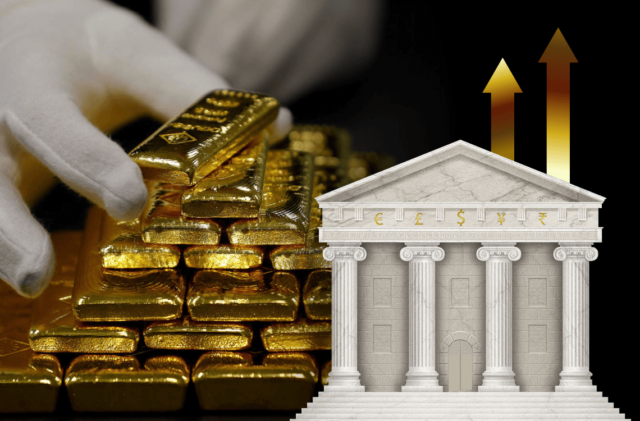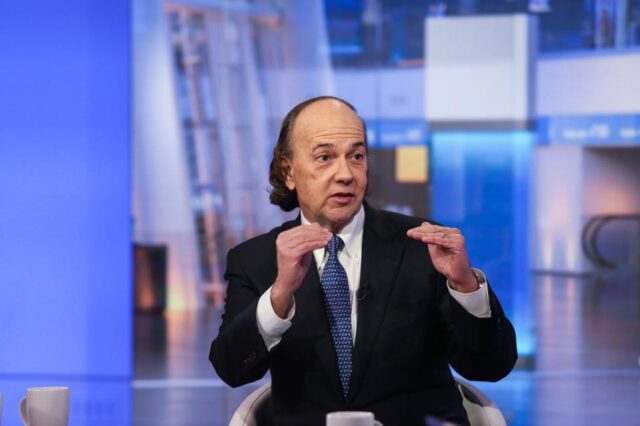Gold’s Big Moment: Why Central Banks Are Buying It
Gold is back in the headlines, and for good reason. After nearly a decade of quiet accumulation, central banks around the world are loading up on gold at a record pace, and prices are hovering near all-time highs. If you’ve been watching this market, you might be wondering: What does it mean for the dollar, the economy, and my portfolio?
Recently, I sat down with economist and author Jim Rickards (author of The New Case for Gold) to unpack what’s driving this historic move and how investors can position themselves before the crowd catches on.
A Quick History Lesson: The Gold Window and Its Aftermath
To understand what’s happening today, you have to go back to 1971 when President Nixon “temporarily” closed the gold window. Up to that point, foreign governments could exchange their dollars for gold. But as U.S. gold reserves were being drained, France even sent a naval ship to pick up its gold, the U.S. pulled the plug.
The plan was to devalue the dollar, hold a new monetary conference, and then return to a gold standard. That conference happened, but the gold standard never came back. Instead, the world moved to floating exchange rates, and central banks became net sellers of gold for decades until 2010, when everything changed.

2010: The Inflection Point for Gold
Since 2010, central banks have flipped from being steady sellers to consistent buyers. And it is not just the usual players like the U.S. and UK. The new buyers are China, Russia, Turkey, Iran, Kazakhstan, Mexico, and even Vietnam.
This quiet but steady demand puts a floor under gold prices. Central banks aren’t trying to drive prices up; they’re simply diversifying away from the U.S. dollar. But their buying means that if you own gold, your downside is limited and your upside remains uncapped.
As Jim put it, this is what he calls an asymmetric trade: limited downside, potentially unlimited upside.
Supply, Demand, and the Missing Frenzy
Global gold supply has been flat for six years, at about 4,000 tons annually. But demand is climbing thanks to central banks and concerns about the “weaponization” of the dollar.
And here is the kicker: retail investors have not even piled in yet. We are nowhere near the kind of public frenzy last seen in 1980, when gold spiked to record highs and coin shops had lines out the door.
That means there is likely still a long runway ahead for gold’s bull market.
Thinking Like an Investor
When gold moves from $2,000 to $3,000 per ounce, that is a 50% gain. But once it is at $5,000, another $1,000 increase is just 20%. The higher gold goes, the easier it is to keep moving higher because those gains represent smaller percentage moves.
That is often when retail investors finally wake up right before the final stage of the rally.
Beyond Price: Earning a Yield on Your Gold
For most people, gold just sits in a vault or safe, not earning anything. But there are now ways to put your gold to work, like leasing it to pre-qualified companies through platforms such as Monetary Metals.
Think of it like renting out a house. You keep the asset, but earn income from it, potentially 2–4% annually, paid in gold. (As always, do your due diligence and review risk disclosures.)
Housing Market Implications
So, what does all this have to do with housing? Quite a bit. When interest rates fall, housing should get more affordable because monthly payments drop, allowing buyers to qualify for bigger loans.
But today, large institutional investors are buying up massive amounts of single-family homes and keeping them as rentals. That effectively removes supply from the “for sale” market, which can keep prices elevated even as rates fall.
This is a major shift in how housing works and one reason I continue to favor owning hard assets like real estate and gold over sitting in cash.

Key Takeaways for Investors
-
Central banks are buying gold aggressively for the first time in decades
-
Demand is rising while supply is flat, setting the stage for higher prices
-
Retail investors have not joined the party yet, meaning the cycle may have years left to run
-
Real estate and gold remain top hedges against currency devaluation and inflation
If you have been on the fence about adding gold to your portfolio or expanding your real estate holdings, this may be the window to take action before the crowd catches on.



